PAINTINGS
AJANTA
CAVE PAINTINGS
the many-splendoured delights of Ajanta compiled by Subramanian Swaminathan
e-mail: sswami99@gmail.com
September 2007
Painting & Dance - Unique
relation in Indian art
The relationship between painting
and dance is a remarkable unique Indian tradition.
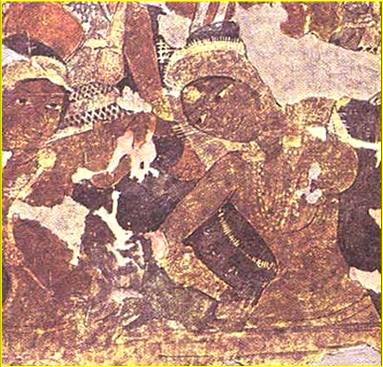
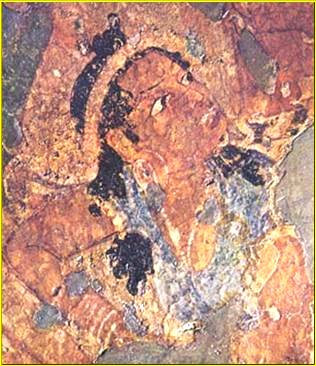
Vishnu-dharmottara (7th century
AD) stresses the impossibility of attaining a proper expression of feeling
in painting without the knowledge of dance.
There are paintings from the earlier
as well as the later periods of Ajanta art, which depict dance scenes.
Dancing had become highly stylised
in the later period. The vibrant grace of pose and gesture invest
her with a swaying, flower-like
rhythm and movement.
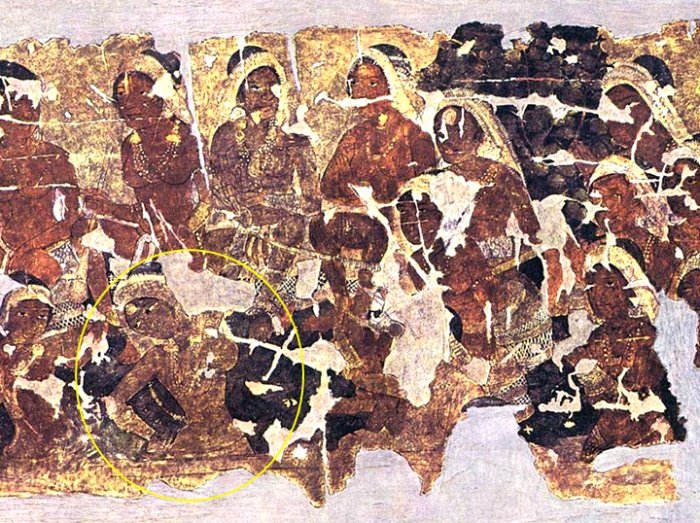
An unaffected dancer from pre-Christian era
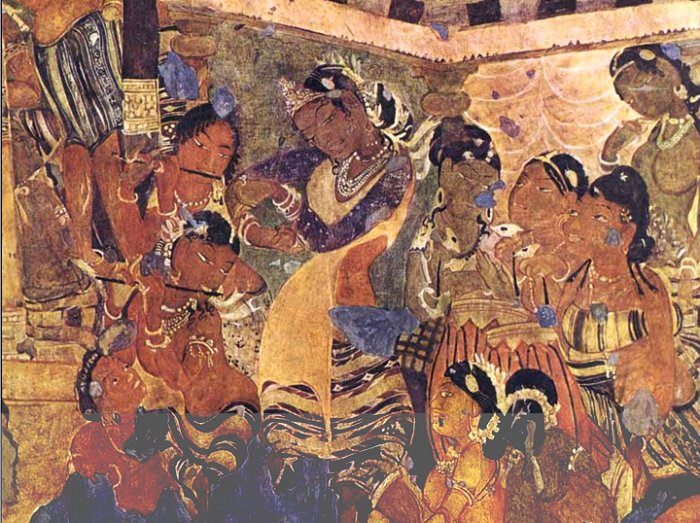
A dancer with full complement
of accompanying musicians Maha-janaka Jataka, Cave 1
Tribhanga Pose
Tribhanga is a very important feature
in the depiction of the human form. The whole figure is structured
around three main axes.
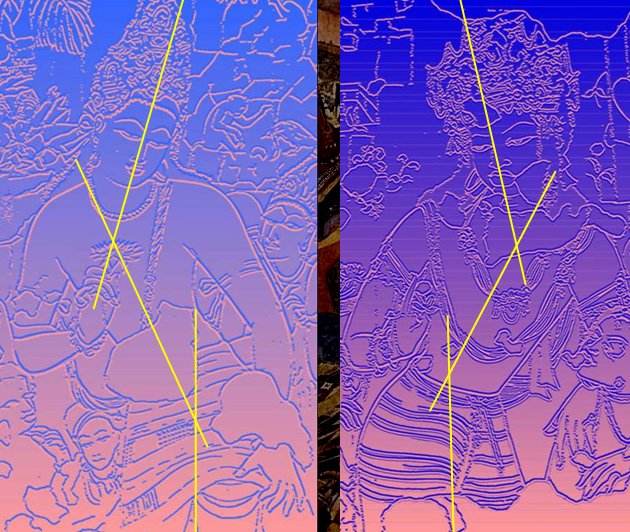
It gives the body an S-shaped rhythm,
a fluency of line, which, together with the appropriate gestures of hands,
conveys a wide range of expressions.
Painting & Sculpture, Another
unique relation
Most impressive is the way the two
art-forms, paintng and sculpture, co-exist at Ajanta, complementing each
other.
The sculptures were fully painted,
though most of the paint has disappeared.
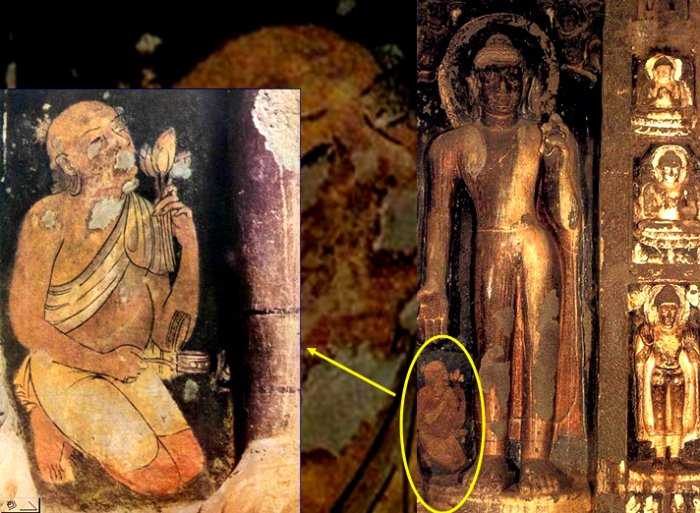
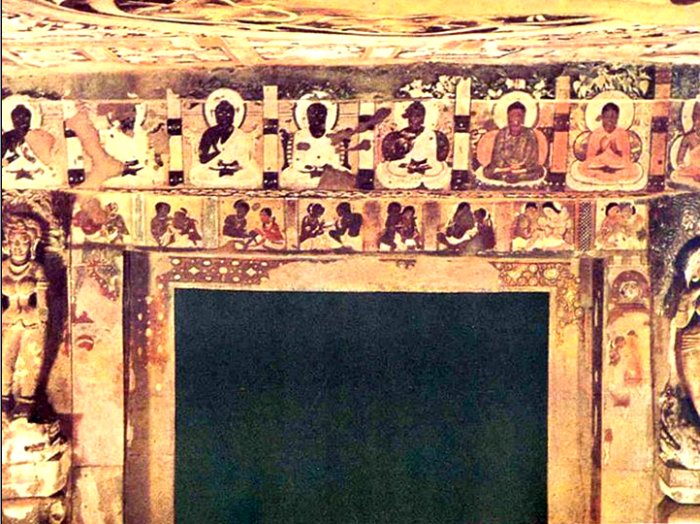
Back
|